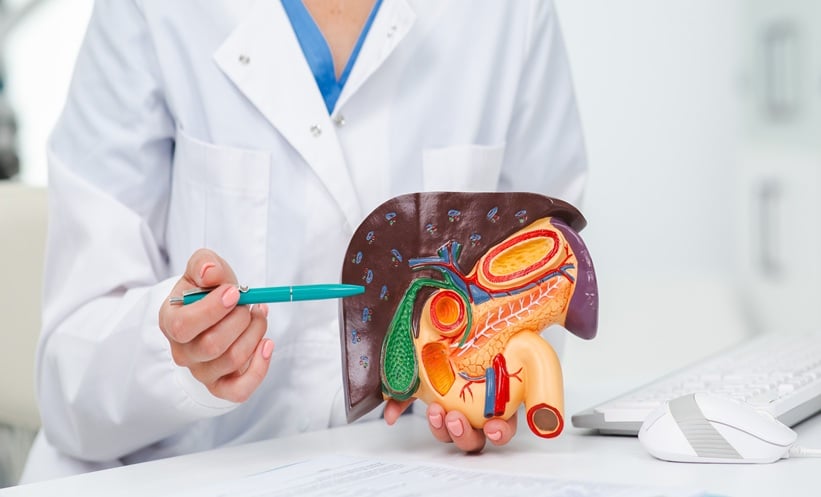THE COMBINATION of ursodeoxycholic acid (UDCA) and vitamin D (VitD) significantly improves liver function, reduces hepatic fibrosis, and increases treatment response rates in patients with primary biliary cholangitis (PBC) compared to UDCA alone.
Primary biliary cholangitis is a chronic autoimmune liver disease with progressive bile duct destruction, which can lead to fibrosis and cirrhosis. UDCA remains the first-line treatment; however, a subset of patients exhibit an incomplete biochemical response. Vitamin D, known for its immunomodulatory and antifibrotic properties, may enhance the effects of UDCA. This study aimed to evaluate the clinical benefits of combining UDCA with VitD in the management of PBC, particularly focusing on hepatic fibrosis and treatment response.
A prospective study was conducted involving 60 treatment-naive patients with PBC between May 2021–December 2022. All participants were initially prescribed UDCA for 1 year and randomised into two groups: one receiving UDCA monotherapy and the other UDCA combined with VitD supplementation (1,200 IU/day). After 1 year, the UDCA monotherapy group was further divided to continue with or without VitD for an additional year. Clinical assessments included liver function tests, immunoglobulin levels, and liver stiffness measurement (LSM) via FibroTouch. After 1 year, the UDCA + VitD group showed statistically significant reductions in AST, GGT, ALP, total bilirubin, PT, INR, IgM, and LSM, alongside increases in albumin and serum 25(OH)D levels. A negative correlation was observed between 25(OH)D and LSM levels. Response rates, assessed using the Paris I and Barcelona criteria, were higher in the combination group: 80.0% (Paris I) and 86.7% (Barcelona), compared to 50.0% and 63.3%, respectively, in the monotherapy group. In the study’s second year, these trends were reinforced, with response rates of 86.7% and 93.3% in the UDCA + VitD subgroup, versus 53.3% and 66.7% in the monotherapy subgroup.
These findings suggest that supplementing UDCA with VitD enhances therapeutic outcomes in patients with PBC by improving liver function markers and reducing liver stiffness, potentially slowing fibrosis progression. The correlation between increased 25(OH)D levels and decreased LSM supports a mechanistic role for vitamin D in hepatic protection. Clinically, this supports considering routine vitamin D supplementation alongside UDCA in PBC treatment protocols. Future larger-scale, multi-centre trials could further define optimal dosing and patient selection to refine this combined therapeutic approach.
Reference
Abulitifu Y et al. The effectiveness of combining ursodeoxycholic acid with vitamin D in treating patients with primary biliary cholangitis and its impact on hepatic fibrosis: a randomized trial. BMC Gastroenterol. 2025;25(1):525.








